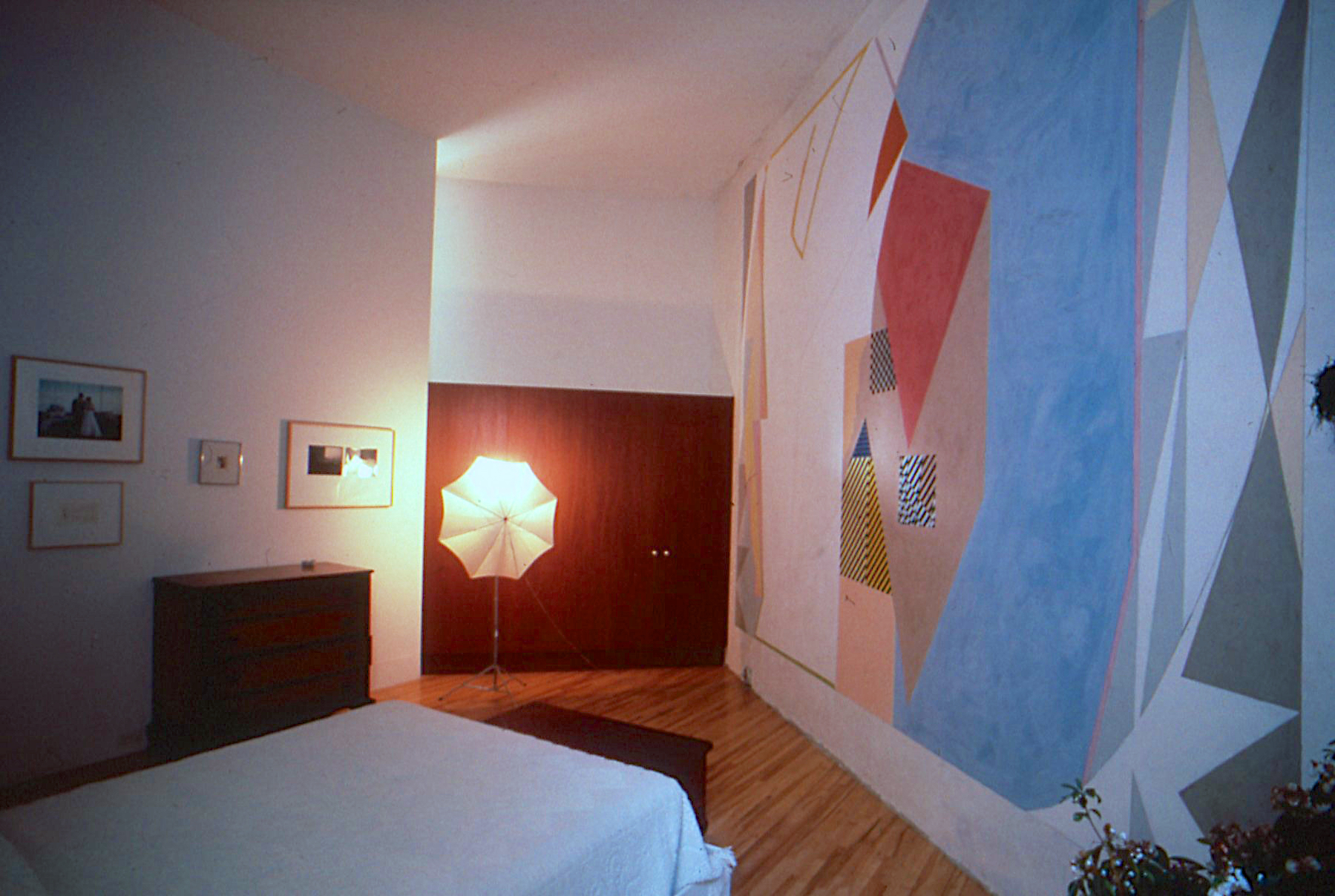Fresco, 1985
It was very exciting to be commissioned to make a fresco for Tiffany Bell and Richard Gluckman when they got married. It was a chance to make something continuous with the space in the sense that it was made for it. Chris Haub helped me paint it, fresco needing to be applied quickly, and we had a couple of guys with a cement mixer who knew what they were doing. Knowing Richard and Tiffany I had the thought that since it was a fresco they wanted it should have mostly fresco-type colors: the sky and terra cotta inflected reds—and that this would be in play with yellow and black in small amounts, which would do concentration rather than sweeping movement or atmosphere.
The fresco has a great deal in common with other work I was making at the same time, but there are also some big differences. In one way it almost combines the particularity of the works I made for the Borgenicht show with the general movement and airiness of the Village Group (allowing for the color pointing not to Kent but to Tuscany, sort of.) The use of white looks to the blank side of North/South (and also back to Grey Genevieve [1979] and other works,) The biggest differences though follow, I think, from its being set in the wall. Everything about how the blue has to work is different when it’s level with the wall. It has to be differently expansive than when it’s complicating one’s sense of where the surface of a painting that is also an object is. Where the painting begins and ends is, as noted, clearly related to the wall’s shape and the space available on it. Its continuous with the wall takes one immediately into a pictorial space. Its actually being the wall complicates this experience. If one sees movement one must be seeing depth of some sort (can’t be movement without space,) so the wall gets optically thickened as it were when one starts to think about looking into the blue, for example. Blue recedes for sure (the sky is always a long way away) but at the same time it is not the case one sees it as ‘beginning’ necessarily behind the wall, raising the question of how far forward it might seem to come as well.


